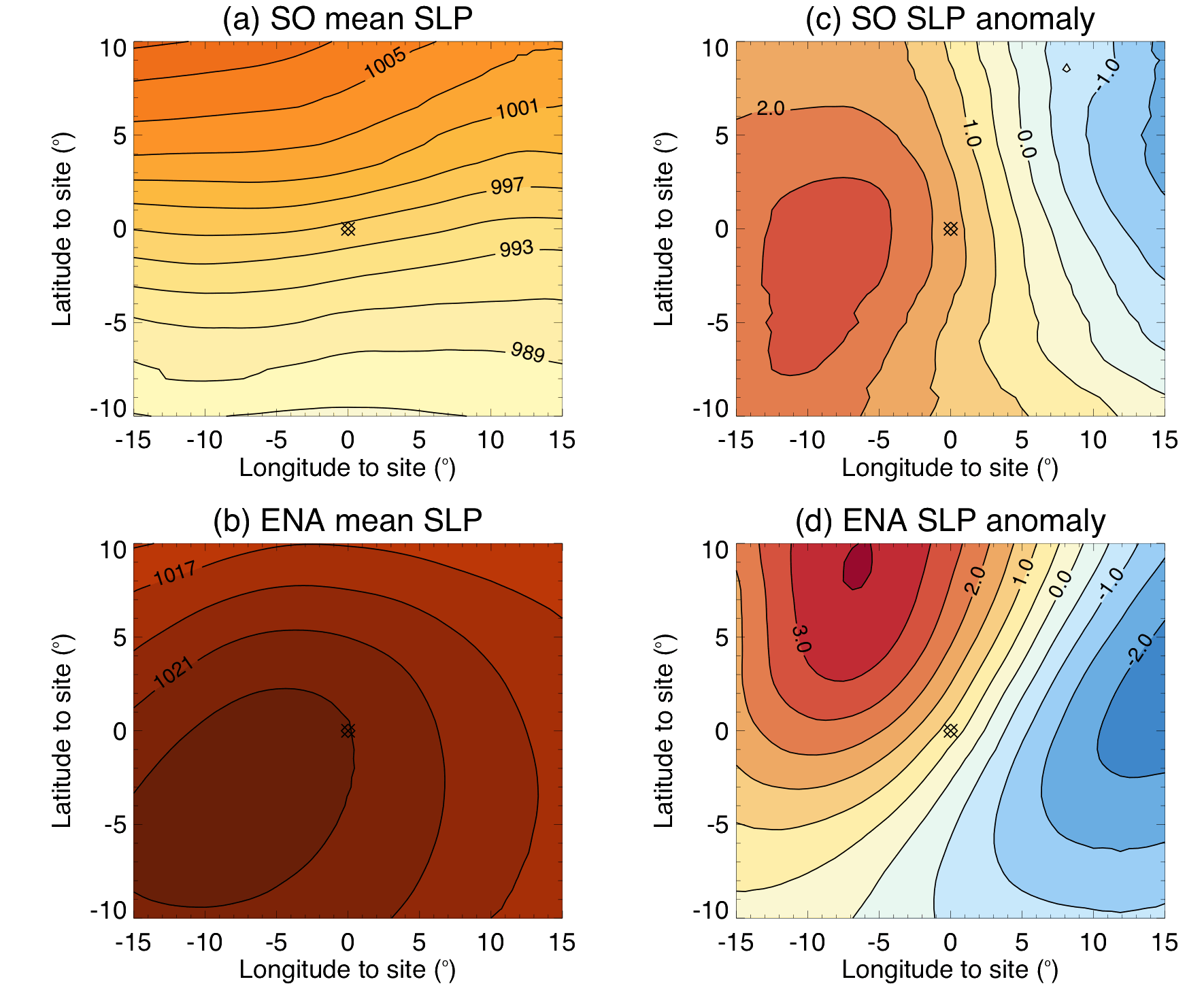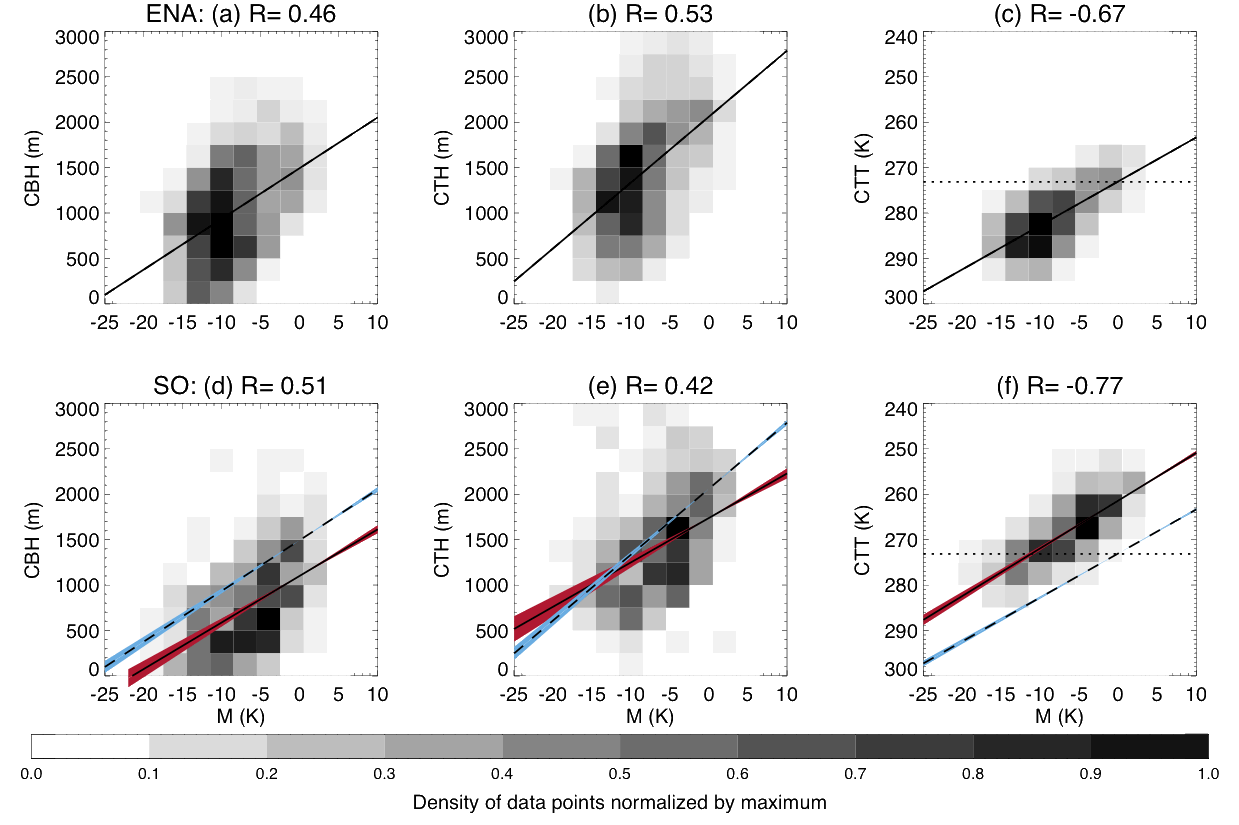New insights on Southern Ocean low clouds and atmospheric stability
Submitter:
Naud, Catherine M. — Columbia University
Booth, James — City College of New York
Area of research:
Cloud Processes
Journal Reference:
Science
Using novel observations of clouds and environmental conditions in the remote Southern Ocean, the conditions of subsidence that sustain low-level clouds were found to be different from those in the Northern Hemisphere. A relatively new measure of lower-atmospheric stability was found to successfully predict low-level cloud vertical location in both Southern and Northern Hemispheres.
Impact
This study determined a strong relationship in low-level clouds between cloud vertical location and stability. These relationships are shown to be useful for analyzing modeled cloud biases. In the future the relationships could be used to improve parameterizations of low clouds, which have proven to be a source of substantial bias in climate models.
Summary
Focusing on conditions of subsidence when low clouds are present, ground-based observations in both the north Atlantic and the Southern Ocean reveal strong relationships between cloud boundary (base and top heights) and different measures of lower tropospheric instability. The difference in potential temperature between the surface and 800 hPa (a metric called M) is shown to have a stronger relationship with cloud properties than measures of inversion strength such as the lower-tropospheric stability and estimated inversion strength. This is because 1) inversion strength itself does not correlate well with cloud boundaries, and 2) M contains information that appears important for cloud boundaries. These include the surface forcing through the use of sea surface rather than near-surface air temperature, and, an upper level close to the real cloud top. These results expand upon previous work on the importance of M as a predictor of cloud morphology. However, important differences are found in low-cloud conditions for the north Atlantic as compared to the Southern Ocean (for a given value of M): stronger inversions, deeper boundary layers, and much larger sea-level pressures. Therefore, the relationship between cloud boundaries and M differs between the two regions. A general circulation model provides similar relationships as observed between M and both cloud top height and temperature, but tends to place clouds higher and at colder temperatures than observed for a given M. This might cause issues with the representation of precipitation, cloud cover, and radiation in the Southern Ocean.



